Added 1 new A* page:There is a very nice new review of A* on Champion City Comics. Thanks guys!
~~~~~~~~~~
I talked about the Destiny module of the International Space Station a bit last week; well, as luck would have it, today the possibly evil Robonaut 2 was just unpacked and switched on in that very module! It could even now be looking down at us through the module's 20" portal window. :o
And to finish up my space module round-up, let's start with the ESA's unmanned Automated Transfer Vehicles ("ATVs"). Their cylindrical design also goes back to the Spacelab modules; these German and Italian-built disposable modules are intended to go up to the ISS every year or so with vital supplies. They launch on the ESA's Ariane 5 rockets from the French Guiana Space Center in French Guiana, South America, possibly looking something like this from the ground (this photo is of an otherwise unrelated Ariane 5 satellite launch there in 2010):
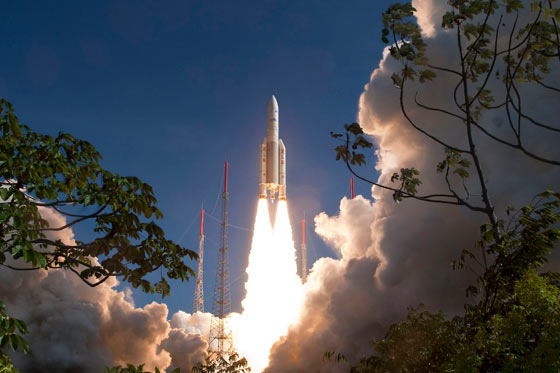
image by Douglasfugazi (source)
and like this from the ISS (that's the Johannes Kepler launching in the far distance, as seen from the station):
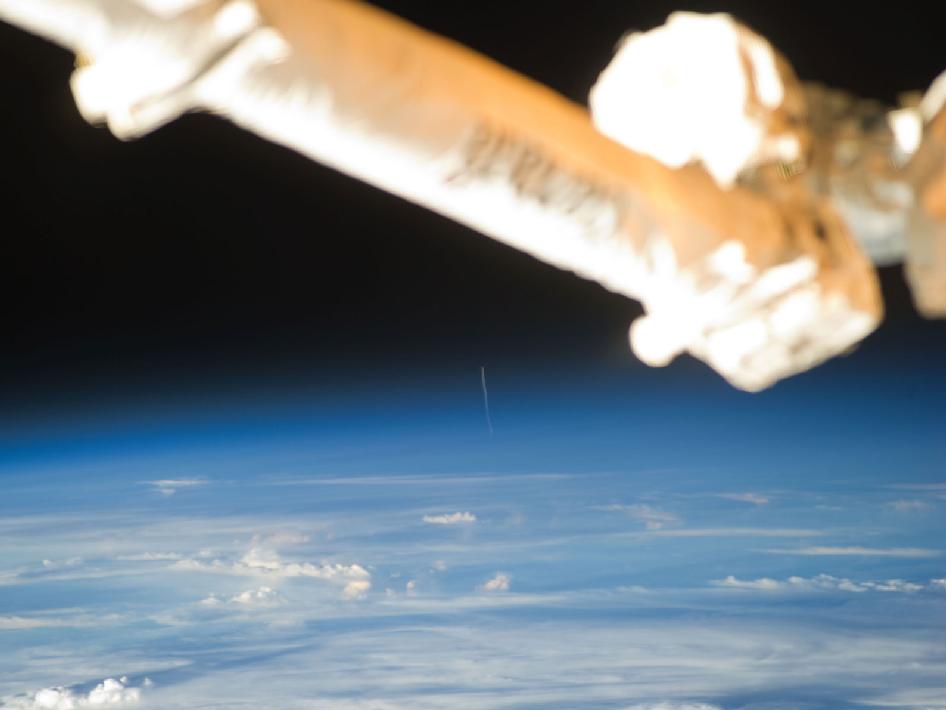
image by NASA/ESA (source)
So far there have been two ATV missions to the ISS: the Jules Verne in March 2008, and the Johannes Kepler in February 2011. They fly up, attach to the station, and their cargo is unloaded. Here are some shots of the Jules Verne approaching the station:
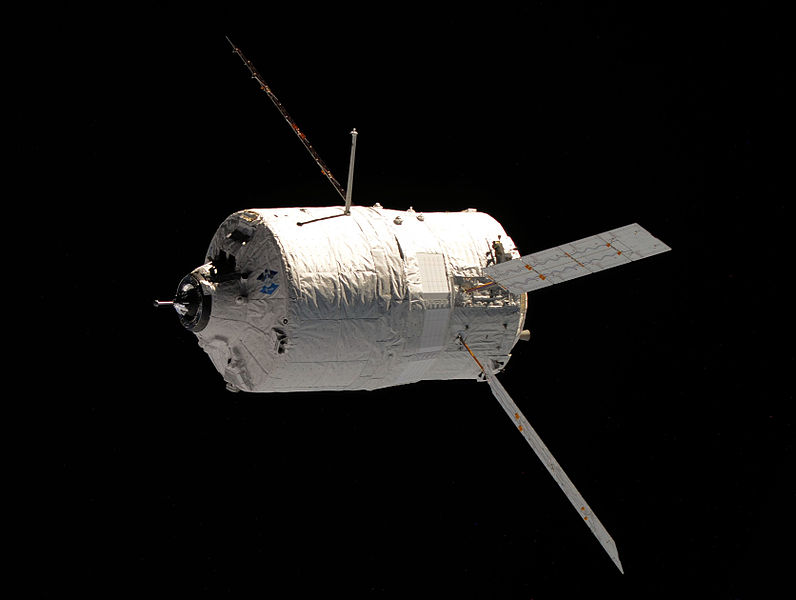
image by NASA (source)
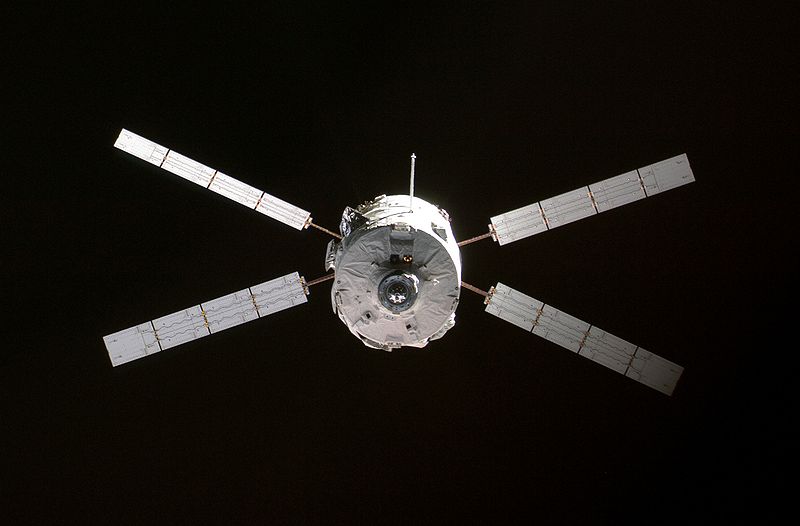
image by NASA (source)
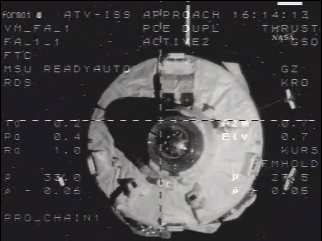
image by NASA (source)
They remain attached for four to six months, looking almost like any other station module aside from their X-wing solar panels, and are steadily filled up with the station's waste products. While attached, they can use their thruster to boost the station's orbit. Here's the Johannes Kepler attached (at top, with the X-shaped array of solar panels):
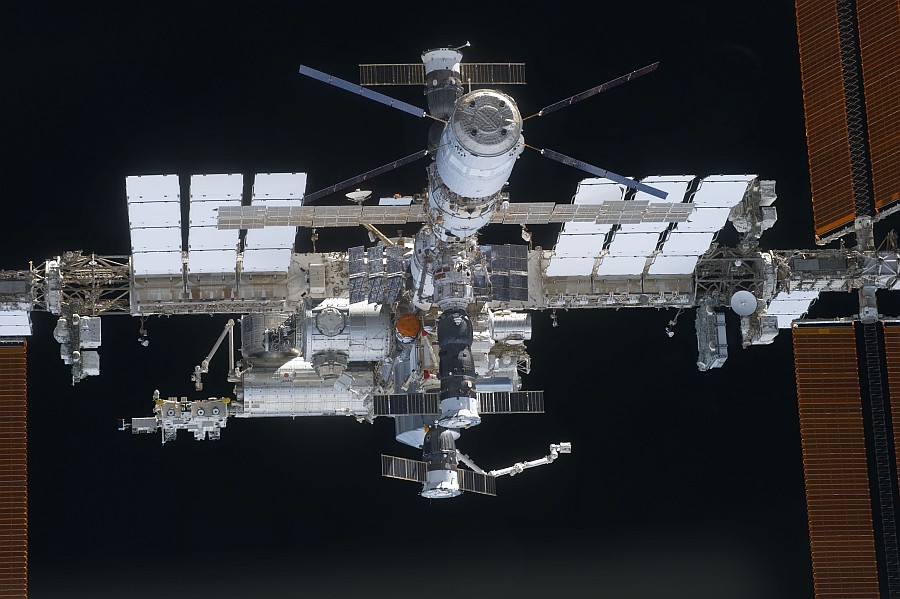
image by NASA (source)
and the Jules Verne (at bottom):
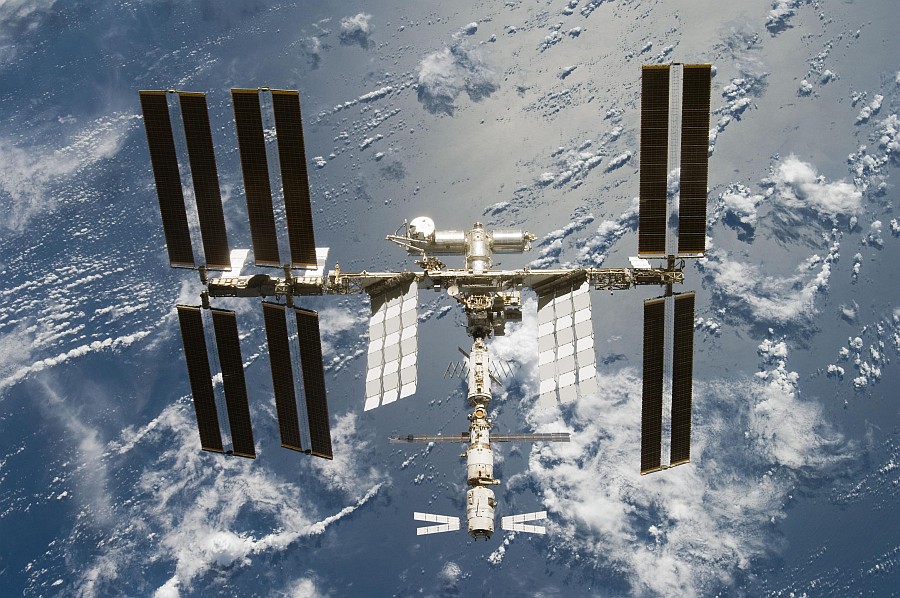
image by NASA (source)
Once they're full of garbage, they detach and fall back into the atmosphere, where they very neatly burn up, like the Jules Verne did in September 2008 just southwest of Tahiti:
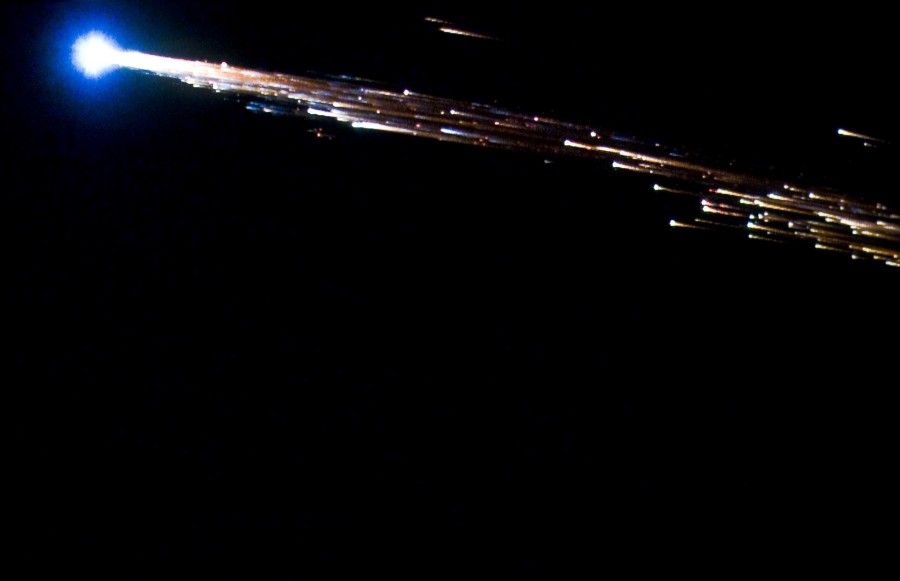
image by NASA (source)
Three more ATV missions are planned: the Edoardo Amaldi (named after the Italian physicist) in February 2012, the Albert Einstein in February 2013, and an as-yet-unnamed fifth ATV in February 2014.
And finally, there is the privately-developed American and French Cygnus spacecraft. Funded by NASA, they are unmanned resupply craft like the ATVs, intended to do much the same thing, and once again utilizing the old Spacelab-derived cylindrical design for their cargo modules. The Cygnus' first "demonstration flight" was originally supposed to have taken place last year, but it has been pushed back to December of this year.
And that's everything I know about space modules!
|
